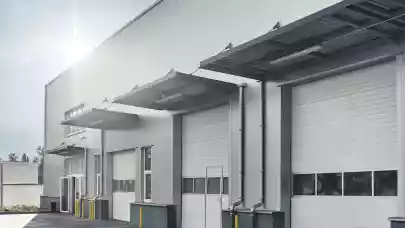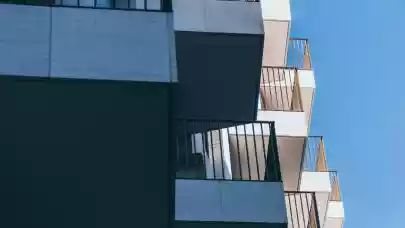
Developers, tenants, and owners of industrial and warehouse space in the Czech Republic are currently investing heavily in their solar power plants. This trend reflects not only the progressive modernisation of the energy sector but also the gradual move away from dependence on fossil fuels. Within this wave of innovation, we are also seeing extensive technological modifications being carried out in parallel on many buildings, aiming at an overall cut in energy consumption. One of the largest rooftop solar power plants to date is at the Urbanity Campus Tachov industrial park, with a reported installed capacity of 5 MW and an approximate annual production of more than 5,000 MWh of electricity, says 108 Agency in its latest report.
At Amazon’s enormous new robotic distribution centre in Kojetín, a just slightly lower figure of roughly 4 MW is also to be generated by photovoltaic panels. According to the real estate consultancy 108 Agency, this decision by the Panattoni Development Company, which redeveloped the former sugar factory for Amazon, is by no means unique in the Czech Republic. On the contrary, installing solar power plants on roofs, facades, or in the vicinity of industrial properties could be called the trend of the year. “This isn’t something we’re seeing only at new builds, but at older buildings too. Developers and owners of warehouses and manufacturing sites are responding to the recent energy crisis, trying to comply with ESG criteria set by banks, and anticipating the tightening of EU legislation on energy self-sufficiency and fossil fuel independence,” explains Jakub Holec, 108 Agency’s director.
This growth in the number of renewable energy installations also reflects the rational approach being taken by warehouse and factory developers. Despite the initial investment, these systems are now starting to show a reasonable rate of return, and on top of that the properties are unaffected by the impacts of energy market prices. Sites that have enough free space available can even capitalise on any surplus they generate – either by providing flexible supplies to the grid at times of peak demand, or through “community energy” schemes, in which industrial properties equipped with green energy sources can play an important role.
Photovoltaic facilities are now being built or expanded by many industrial property developers and owners. One of the largest developers, CTP, is already far along in the process and aims to have panels with a collective capacity of 300 MWp on its buildings by 2030. So far it has around 14 MWp, with a further 30.5 MWp of PV systems to be installed this year, and 40 MWp more in 2024.
The commercial developer Contera wants to achieve a cumulative capacity of 8 MW in the initial phase at its sites in Hrušov, Krupka, Teplice and Říčany, and plans to power its entire portfolio with solar energy by 2025. GLP Europe, an investor and developer focusing on the logistics segment, is looking to install panels with a capacity of 17 MW on its industrial properties as soon as possible, and another major European player, CGL, is also getting actively involved in solar power plant construction.
A clear plan to generate around 12 MW on its buildings has been announced by the Arete group as well. By September it will have an installed capacity of 1.4 MWp at its industrial park in Valašské Meziříčí, along with a smaller photovoltaic plant in operation at Arete Park Rokycany. Flow Management, the owner of the Big Box Park in Horní Počernice, plans to develop facilities for the whole park as soon as possible, with a maximum total output of 246,444 kW per year. Other recently announced photovoltaic projects include the DB Schenker logistics centre in Rudná u Prahy (with an installed capacity of 849.2 kWp), the Fenix factory in Jeseník (900 kWp), the Pražské strojírny site in Vinoř (996 kWp, with a capacity to generate up to 980 MWh of electricity per year) and several stages of the PV project being undertaken at the ZF Electronics factory in Klášterec nad Ohří (998 kWp + 412 kWp).
“We could point to dozens more examples as well, although things aren’t always going perfectly smoothly. Some of the older buildings are running into structural issues with their plans, and some of the new developments could be hampered by the capacity of electrical substations or the distribution network. But even so, the Czech Republic is doing very well in establishing renewable energy facilities at industrial parks,” says Matěj Indra, head of industrial and logistics property leasing at 108 Agency.
According to his colleague Michal Bílý, head of market research at 108 Agency, this trend will keep the number of green building certifications on the rise. As of the middle of 2022, 49% of completed industrial buildings in the Czech Republic were certified. By the end of this year this figure is expected to reach 55%. The good news is that the generous grant schemes for PV power plants are set to continue, including funding under the National Recovery Plan, while a simpler permit procedure is being introduced for PV and other renewable energy facilities.



